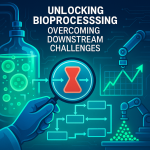Introduction:
WhiteLab Genomics, the Vision Institute, and ADLIN Science have formed a strategic partnership called the GEAR partnership. The objective of this alliance is to develop new adeno-associated virus (AAV) vectors for gene therapy targeting retinal dystrophies. Currently, there are limited vectors available that can effectively target the outer retina with low immunogenicity and low dosage. The consortium aims to overcome these barriers by using rational and combinatorial approaches guided by machine learning algorithms.
- The GEAR partnership aims to develop new AAV vectors for gene therapy targeting retinal dystrophies.
- Currently, there are no specific vectors available for targeting photoreceptor cells in the outer retina with low immunogenicity and low dosage.
- The consortium will leverage their knowledge and use rational and combinatorial approaches guided by machine learning algorithms to generate and test AAV variants with high therapeutic potential in humans.
- The partnership will receive a budget of €4m from BPI France and funds from the Île-de-France region as part of the France 2030 plan.
- The GEAR partnership aligns with the France 2030 plan’s goal of establishing France as a European leader in biopharmaceutical production and positioning the country as a global leader in AI-driven gene therapies.
Conclusion:
The GEAR partnership between WhiteLab Genomics, the Vision Institute, and ADLIN Science represents a significant step towards developing effective gene therapies for retinal dystrophies. By combining their expertise and leveraging machine learning algorithms, the consortium aims to overcome the current limitations in targeting photoreceptor cells in the outer retina. The partnership’s funding and alignment with the France 2030 plan demonstrate France’s commitment to becoming a leader in biopharmaceutical production and AI-driven gene therapies.



